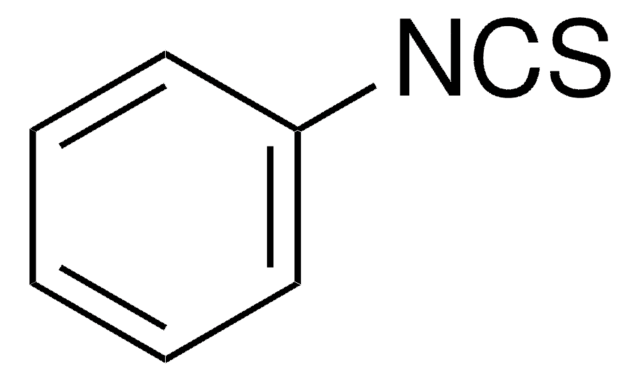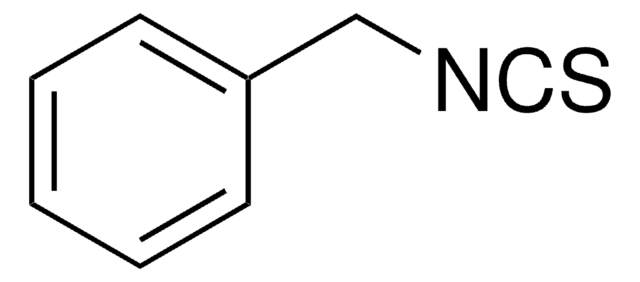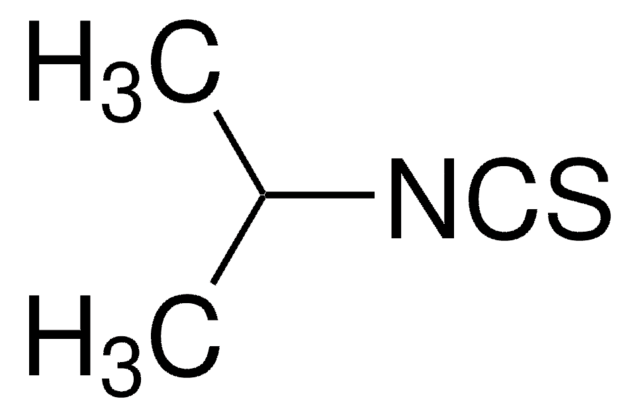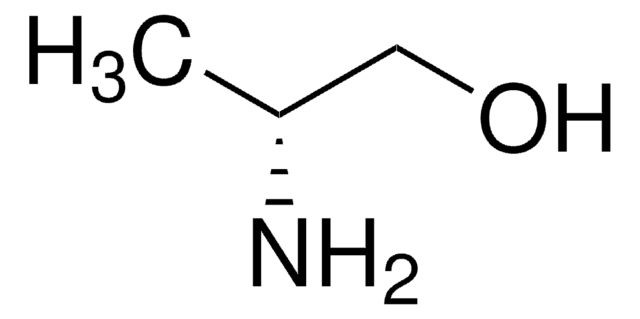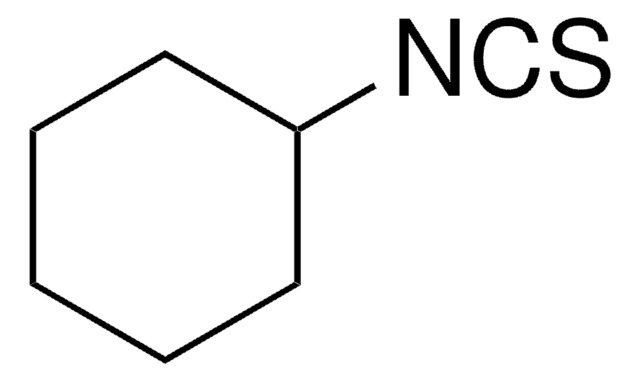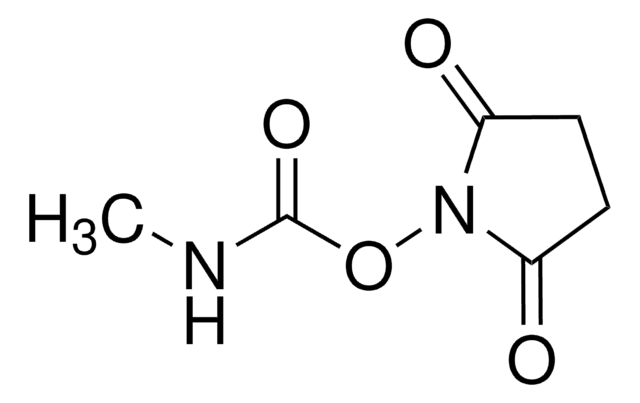112771
Methyl isothiocyanate
97%
Synonym(s):
Isothiocyanatomethane, Isothiocyanic acid methyl ester
About This Item
Recommended Products
vapor pressure
21 mmHg ( 20 °C)
Quality Level
Assay
97%
bp
117-118 °C (lit.)
mp
30-34 °C (lit.)
solubility
H2O: slightly soluble
density
1.069 g/cm3 at 25 °C (lit.)
functional group
amine
isothiocyanate
SMILES string
CN=C=S
InChI
1S/C2H3NS/c1-3-2-4/h1H3
InChI key
LGDSHSYDSCRFAB-UHFFFAOYSA-N
Looking for similar products? Visit Product Comparison Guide
General description
Methyl isothiocyanate is an active chemical used as an anti-fermentative agent in wine and as an effective insecticide.
Application
- For amino acid sequence analysis
- To study the effect of pesticide Metam (methyl isothiocyanate is its active ingredient) in the streamside microbial communities
Signal Word
Danger
Hazard Statements
Precautionary Statements
Hazard Classifications
Acute Tox. 2 Dermal - Acute Tox. 2 Inhalation - Acute Tox. 3 Oral - Aquatic Acute 1 - Aquatic Chronic 1 - Eye Dam. 1 - Skin Corr. 1B - Skin Sens. 1 - STOT SE 3
Target Organs
Respiratory system
Storage Class Code
3 - Flammable liquids
WGK
WGK 3
Flash Point(F)
86.0 °F - closed cup
Flash Point(C)
30 °C - closed cup
Personal Protective Equipment
Choose from one of the most recent versions:
Already Own This Product?
Find documentation for the products that you have recently purchased in the Document Library.
Customers Also Viewed
Our team of scientists has experience in all areas of research including Life Science, Material Science, Chemical Synthesis, Chromatography, Analytical and many others.
Contact Technical Service
